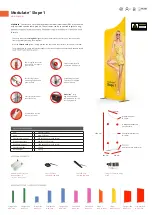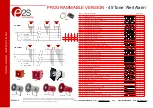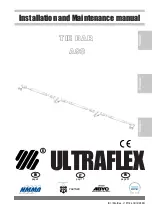
Chapter 3
3-14
Esprit® Ventilator Service Manual © Respironics, Inc.
REF 580-1000-02 G
Theory of Operation
Motor Controller PCBs
There are three motor controller PCBs for the air valve, oxygen valve, and
exhalation valve. The three boards are physically the same, and are
differentiated by the slot they occupy on the main PCB:
•
Exhalation valve motor controller PCB: slot CN11
•
Oxygen valve motor controller PCB: slot CN12
•
Air valve motor controller PCB: slot CN13
Each motor controller PCB includes a microprocessor dedicated to controlling
the corresponding motor, and drives the step positions of the motor based on
input from the CPU.
Sensor PCB
The sensor PCB contains an analog to digital converter (ADC) that converts
analog signals from various pneumatic components and the power supply into
digital signals for the CPU. Signals include: air flow and temperature, oxygen
flow and temperature, exhalation flow and temperature, inspiratory and
exhalation pressure, battery voltage, FIO
2
, enclosure temperature, and
enclosure oxygen concentration.
The sensor PCB conditions blower speed analog input and the on/off control to
the blower controller PCB, and routes signals for the oxygen pressure and
blower temperature switches.
The sensor PCB also includes voltage monitors. LEDs on the sensor PCB light
to indicate under- and over-voltage conditions, as summarized in Table 3-2.
LED on Sensor
PCB
Voltage Condition
D3
Power supply: -12 V under
D4
Power supply: +12 V under
D5
Power supply: +24 V under
D6
Sensor PCB: +5 V under
D7
Sensor PCB: +5 V over
D8
MMI PCB: +5 V under
D9
MMI PCB: +5 V over
D10
Power supply: +10 V under
D11
Power supply: +10 V over
D12
Main PCB: +5 V over
D13
Main PCB: +5 V under
D49
Power fail
















































